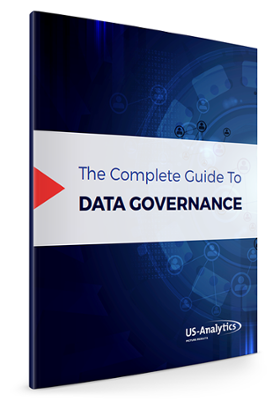Establishing a common set of data parameters that your organization follows seems like it should be simple, but the truth is that every group needs their own view of the data. Consider a simple concept like “Total Monthly Sales.” If I’m speaking from a sales group perspective, I’m referring to all the business my sales organization closed in the time period I’m reporting for. If, on the other hand, I’m asking the group controller, his definition is going to reflect all closed business that has been booked to the ledger.
Hence, at month end, when the CEO is trying to review how the organization is doing against the stated goals, the answer he gets for “Total Monthly Sales” will be different based on whom he asks. The detrimental effect of alternate views is the inconsistency of data across the organization. Departmental management makes operational decisions based on what they perceive is the truth, and corporate management makes strategic decisions based on these perceptions. If the data is not the same, it is easy to see how operational decisions can conflict or adversely affect the strategic corporate goals.
What's the solution to poor data quality?
Data management comes with a handful of terms — data governance, change management, master data management, and process control, to name a few — that are often used interchangeably. However, it’s important to differentiate exactly what role each plays as part of the overall corporate strategy that controls the flow of information across the enterprise. Failures of any one of the processes involved in these organizational functions can cause chaos across the enterprise.
Data governance (DG) can best be defined as a risk control process. Managed control over data availability, usability, integrity, and security is crucial to support flexibility and growth of any enterprise. A successful data governance program requires:
- A governing body or council with a defined set of mandates, goals, and processes
- A dedicated plan to execute those procedures
- People and technology that can automate the processes and enforce the procedures
Change management is a defined process used by the enterprise to make data changes across an organization in a consistent and orderly fashion. Designed to ensure the integrity of data across the enterprise, change management is a vital part of the total data governance process. Typically, the data is controlled by business processes (business rules) needed to support changes to key data under the supervision and control of data governors responsible for the overall quality of the data. These subject matter experts understand exactly when, how, and if changes to given data are appropriate.
Master data management (MDM) refers to the control and support of data that has been defined as organizational. This would include data shared across departments, such as customer numbers, part numbers, vendor IDs, or employee IDs, to name a few examples. MDM systems and processes remove duplicates, standardize data (mass maintain), and incorporate business rules designed to reduce the amount of incorrect data entering core enterprise systems. A hub, or central master data repository, is created to serve as the authoritative source of enterprise master data. Usually the phrase “one version of truth” is used to describe this concept.
Is your data governance process effective?
If your organization is having issues with…
- An unacceptable amount of time being spent on report reconciliation and inconsistent performance results
- Data entry errors and inconsistent application coding due to master data being manually entered into multiple corporate systems
- Inability to maintain a consistent set of definitions for key performance indicators (KPIs) across the enterprise
- Data being distributed across the organization inconsistently or not at all
- Difficulty managing key corporate master data across the enterprise — systems get adds/deletes/changes at different times or receive conflicting data from different systems
- Bottlenecks in your change management process that delay approval of adds/deletes/changes
… experiencing one or more of the above problems indicates that your data governance program needs attention and improvement.







